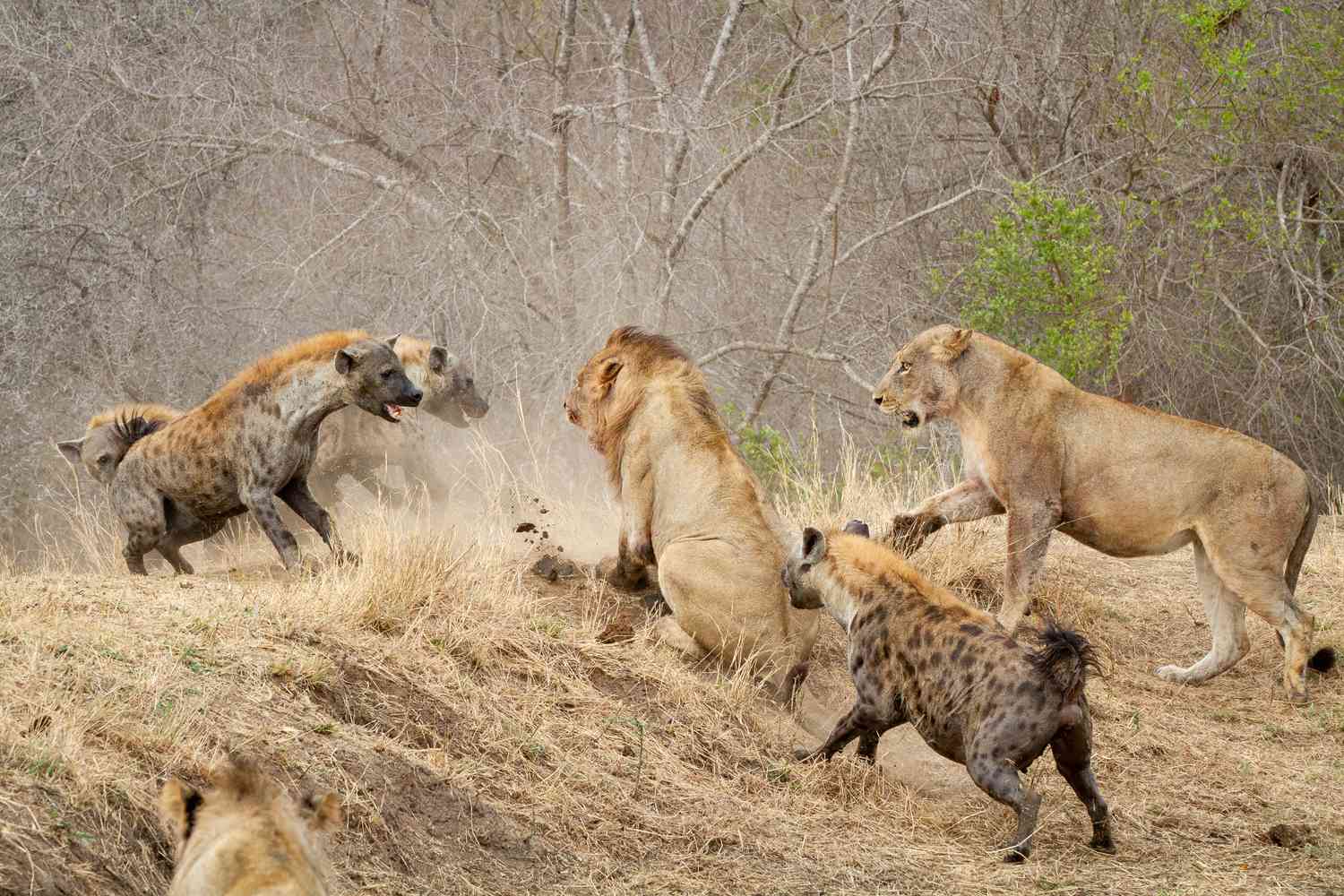
If you’ve ever watched wildlife footage of lions snarling at circling hyenas—or vice versa—you’ve seen just a glimpse of one of nature’s most iconic rivalries. Lions and hyenas don’t just compete for food; they clash over territory, dominance, and survival itself.
In this post, we explore the fierce relationship between lions and hyenas: how they interact, why the rivalry exists, and what these power struggles mean for life on the savanna.
A Conflict of Kings and Queens
Lions and spotted hyenas share overlapping roles in the African ecosystem:
- Both are apex predators.
- Both are opportunistic scavengers.
- Both live in complex social groups.
This overlap leads to constant tension. While lions are larger and stronger individually, hyenas have numbers, persistence, and cunning on their side.
At the Kill Site: Who Gets to Eat?
Much of the lion-hyena rivalry plays out at kill sites, where either species might try to steal a fresh carcass from the other.
If Lions Arrive First:
- Hyenas may hover nearby, waiting for scraps.
- If outnumbered or outmuscled, they keep their distance.
- Lionesses are often more tolerant than males—males tend to charge and attack hyenas on sight.
If Hyenas Arrive First:
- They eat fast, often gorging in under 15 minutes.
- If lions show up, hyenas will assess the risk:
- Outnumbered? They flee.
- In a pack of 15+? They might challenge lions—even drive them off, especially lone females.
This dynamic balance of power shifts constantly depending on numbers, hunger, and courage.
The Numbers Game
Hyenas rely on strength in numbers. A large hyena clan (20+ individuals) can:
- Mob lionesses and force them to abandon kills
- Distract one lion while others steal food
- Harass lions into retreat using persistent calls and bold lunges
Lions, however, can inflict fatal wounds with a single paw swipe or bite, especially males.
Lions don’t hunt hyenas for food, but they do kill them—often brutally—to remove competition. Hyenas, in turn, may kill young or injured lions if they can.
Beyond the Kill: Territory and Tension
The rivalry isn’t just about food—it’s about space. Both lions and hyenas:
- Patrol large territories
- Leave scent markings and vocalize (roars and whoops) to announce presence
- Compete for overlapping prey species
Where prey is abundant, conflicts are more frequent. In dry seasons or lean times, aggression escalates.
Intelligence and Strategy
Spotted hyenas are highly intelligent, with social structures as complex as lions. They:
- Recognize individual lions and remember past encounters
- Use calls and body language to coordinate mobbing behavior
- Adjust strategies depending on whether males or females are present at a kill
Lions, too, adapt—older lionesses may stash kills or drag carcasses into cover to avoid detection.
Famous Clashes in the Wild
Nature documentaries have captured unforgettable battles:
- “The Battle at Kruger”: Lions, buffalo, and crocodiles—all while hyenas wait for a chance to scavenge
- Savuti, Botswana: Known for nighttime turf wars between lion prides and massive hyena clans
- Serengeti National Park: Where hyenas and lions regularly engage in deadly contests over wildebeest kills
These are not one-off events—they reflect an ongoing ecological chess game between two top predators.
Final Thoughts
The rivalry between lions and hyenas is more than a battle of brawn—it’s a story of strategy, survival, and the harsh realities of the African wild. In a world where every meal matters, and the line between predator and scavenger is often blurred, both lions and hyenas push each other to be smarter, stronger, and more adaptable.
They are rivals, yes—but in many ways, they are mirrors of each other.
Next in the series: Lions and drought—how climate stress is reshaping lion behavior and pride survival in a changing Africa.
Disclaimer: This blog post is for edutainment purposes only and may not be entirely accurate.






